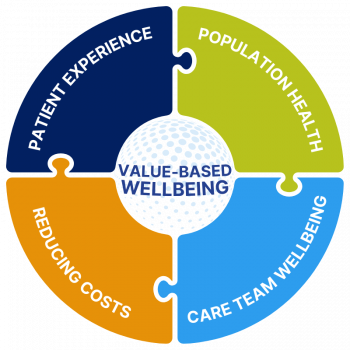
Maximizing Health Outcomes: The Impact of Economic Incentives on the Quadruple Aim
The characteristics of the modern healthcare landscape are well-known – escalating costs, quality metrics, and overall health of the workforce play a critical role not only in managing human capital but also in contributing to the Quadruple Aim:





One innovative, increasingly important approach is leveraging economic incentives to change health behavior and support the Quadruple Aim.
Economic Incentives: Aligning Health Behaviors and Financial Advantage
Economic incentives leverage the fundamental principle that behaviors often follow pecuniary interests. In the world of healthcare, such incentives can have a profound impact – driving individuals towards health-promoting behaviors while reducing the burdens of healthcare system costs. But how can these incentives be effectively introduced?
Innovative Application of Economic Incentives in Health
A cornerstone of incentive-based approaches is the positive reinforcement of desired health behaviors, such as exercising regularly or following a healthy diet. This can materialize in different forms, like reduced insurance premiums or rebates for gym memberships.
Premium reductions can act as an initial inducement, encouraging employees to have health screenings or complete health risk assessments. This initiates the process by mapping the overall health of the employee population.
Incentivizing gym subscriptions or any other physical activity can be a highly effective approach. Studies have shown that financial incentives can significantly increase physical activity levels, favorably impacting health outcomes and reducing healthcare costs.
Rewards linked to smoking cessation or achieving weight loss goals have also been shown to motivate healthy choices. Incentives could also be designed to reward preventive screenings or manage chronic illnesses such as diabetes or hypertension adequately.
Insights from inHealth Strategies and BestHealth by Baptist
inHealth Strategies, in collaboration with BestHealth by Baptist, has demonstrated the effectiveness of personalized incentives to foster holistic wellbeing. By integrating outcome-based and participation-based incentives tracked through the AwardCo portal, they have achieved significant engagement:
- 90% of employees completed their Health Risk Assessment (HRA)
- 93% of payments rewarded were redeemed
Incentives for annual wellness visits (AWVs) have been especially effective, leading to a 5.7% reduction in adjusted total costs and potentially generating a 5:1 return on investment with potential healthcare savings up to $6 million per program year.
Holistic Wellbeing: Encouraging the Full Spectrum of Health
Wellness programs often prioritize physical health, but it’s crucial not to discount mental and emotional health, particularly in the current landscape with heightened pressures, further emphasizing the importance of mental wellbeing.
An evidence-based, innovative approach could include offering incentives for participation in mindfulness-based stress reduction programs, digital mental health apps, or EAP programs. Incentives could also be targeted towards promoting work-life balance, such as rewards for taking personal time off or attendance in workshops focusing on stress management or resilience training.
Evolving Incentive Models: Your Path to the Quadruple Aim
Tailored incentives catered to your demographics, ongoing analysis of incentive effectiveness, and making necessary adjustments are vital features of evolving incentive models. The goal is to create a personalized, holistic model that induces health ownership and fosters wellbeing, thus propelling your organization towards the Quadruple Aim.
The emergence of sophisticated AI and data analytics technologies, like the inHealth Insights platform, can be transformative. They allow for health risk stratification, enabling the design of tailored interventions and guiding economic incentive distribution based on metrics and health behavior success.
Conclusion
Applying economic incentives in these innovative ways can significantly enhance your healthcare system’s pursuit of the Quadruple Aim. This benefits individual employees, the workforce, and your health system as a whole. Health and wellbeing are integral to your health system’s collective growth and success. With the strategic use of economic incentives, you can motivate your employees to participate actively in their health journey, fostering a culture that supports and cultivates health – ultimately realizing the Quadruple Aim.
To learn more about how inHealth’s comprehensive wellbeing programs are not only proven to decrease risk for chronic disease, increase productivity, and transform your company’s culture, but they can also reduce your business expenses, check out our Savings Calculator or email us at connect@inhealth4change.com.
